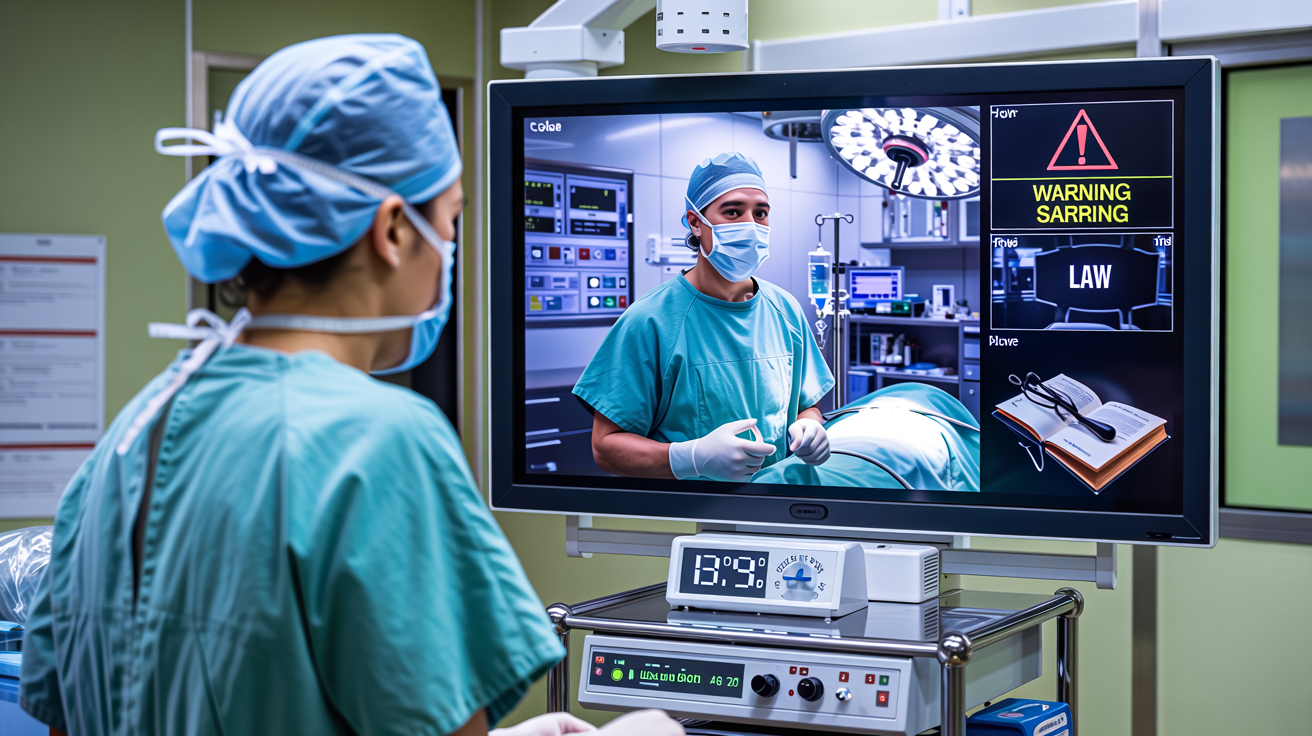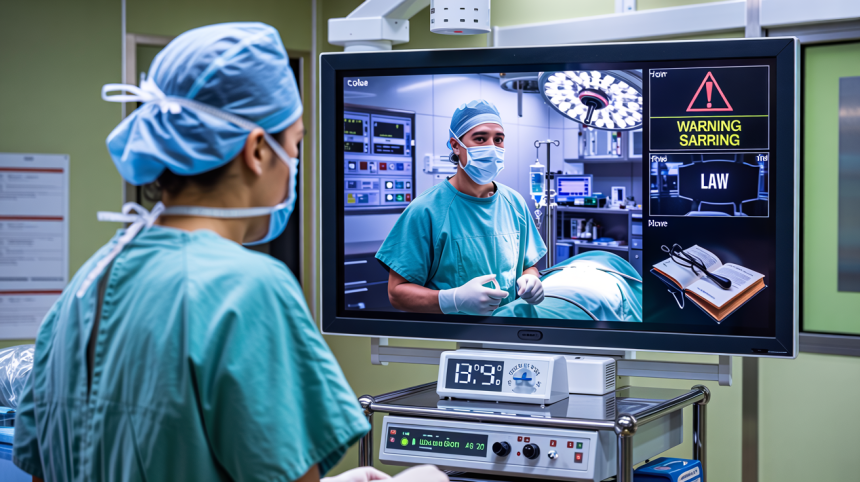
NMC Bars Live Broadcasts of Established Surgical Procedures !
In a significant legal move, the National Medical Commission (NMC) has barred the live broadcasting of all existing or established surgical procedures — regardless of patient consent or hospital setup.
According to the Guidelines dated 26 July 2025, only new or innovative procedures may be live-streamed, and that too under strict educational, ethical, and regulatory conditions.
This distinction is critical:
✅ If the surgery is routine or already in widespread practice, it must not be broadcast live, even for internal CME or conference use.
✅ For such cases, only edited, recorded videos should be used for educational dissemination.
Introduction
Over the last year, I’ve had more and more hospitals ask me:
“Can we stream our OT procedures for training?”
“Is it legal to broadcast a live surgery if the patient consents?”
The confusion ends here.
On 26th July 2025, the National Medical Commission (NMC) released formal guidelines that now regulate the broadcast of live surgeries in India. These were issued following a Supreme Court directive in a case filed by Dr. Rahil Chaudhary and others, questioning how some institutions were using live surgeries in conferences — not just for learning, but also for commercial visibility.
This article is my interpretation — from a legal, ethical, and practical lens — to help you stay compliant and confident.
Why the Need for These Guidelines?
Many of us have seen the shift. What started as educational broadcasts have, in some cases, morphed into:
• OT branding opportunities
• Sponsored demos by device companies
• Surgeon glorification on social media
• And at times, unclear patient consent
This growing gray area prompted the Supreme Court to intervene — not to ban live surgeries, but to create a structured framework for their ethical and legal conduct.
NMC Recommends Cadaver, Wet Lab, and Simulation-Based Training
While live surgeries are now heavily restricted, the NMC has encouraged safer, structured alternatives for surgical training — without involving live patients.
The 2025 guidelines explicitly recommend:
- ✅ Cadaveric dissections and demonstrations
- ✅ Wet labs using synthetic or animal tissue models
- ✅ Simulation-based training using high-resolution virtual surgery systems
- ✅ Recorded surgical videos with detailed commentary and annotations
These methods ensure zero patient risk, better frame-by-frame learning, and standardized access for medical students and surgeons — especially in tier 2/3 cities.
“In the view of EMRB, these alternatives preserve both the ethical integrity and the academic value of surgical training.” – NMC Guidelines, July 2025
The Key Legal Takeaways
Here’s what the 26th July 2025 NMC Guidelines say — in plain English:
Who can organize live surgeries?
• Hospitals or institutions listed under the NMC Act, 2019
• You must have indemnity insurance
• If involving a foreign doctor, get temporary permission from NMC + State Medical Council
• No doctor or hospital can use the live broadcast for self-promotion, brand deals, or product endorsements
Who can perform them?
• Only qualified RMPs with 5+ years post-specialty experience • The operating surgeon must also be involved in post-op care for at least 24 hours
Let’s Talk Infrastructure (This Is Often Ignored)
A lot of legal non-compliance happens due to oversight, not intention. So here’s what the hospital must ensure before even planning a live surgery:
• An accredited OT with ICU, emergency, and lab support
• A complication management plan with backup staff
• Proper approval from the SMC or institutional head
• If any condition is missing, you can’t go live — you can only use pre-recorded footage
Consent: Your First and Final Legal Defence
I cannot emphasize this enough: The patient’s consent is your firewall.
It must be:
• Written
• Explicit
• Informed
• Delivered by the surgical team — not marketing, not admin And it must include:
• Purpose of broadcast (educational only)
• Risks & benefits
• Privacy + right to withdraw consent anytime
• Assurance that no extra charges will be passed to the patient
If you skip this, your indemnity insurance may not help you in court.
What’s NOT Allowed (And Could Get You Into Trouble)
❌ Interacting with the audience while operating
❌ Broadcasting high-risk surgeries live (recordings preferred)
❌ Showing patient faces or identifiers
❌ Using the video as content marketing
❌ Financial or brand-linked incentives
My Legal Advisory to Hospitals & Doctors
From a medico-legal perspective, here’s my simple checklist before you plan to go live:
1. Record, don’t stream — unless it’s a new technique, in a teaching setup, with full documentation
2. Always vet your consent form with a medico-legal lens
3. Seek SMC and NMC permissions proactively
4. Use a moderator instead of engaging mid-surgery
5. Avoid any perception of glorification or brand promotion
And remember: even if you’re ethically clean, litigation doesn’t wait for your intention — it builds on what you recorded or documented.
⸻
Final Thoughts: Law Is Not an Obstacle — It’s a Shield
I believe these guidelines are a step in the right direction.
They don’t ban medical learning.
They simply protect doctors from unintentional breaches.
As someone working with hospitals across India, I see one clear message:
“Train responsibly. Broadcast compliantly. And always, always — put the patient first.”
If you’re planning a broadcast, or just want to audit your consent and OT practices, I’d be happy to assist.
⸻
About the Author
Lokesh Bagani
Medico-Legal Consultant | Founder, LegalMedico.com
Advising doctors, hospitals, and healthcare businesses on digital compliance, ethics, and healthcare law.
🌐 Website: https://www.legalmedico.com

